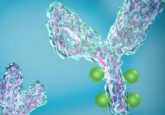Could targeting hormone receptors be an effective strategy in management of adrenal hyperplasia?
Cushing’s syndrome is classified into corticotropin-dependent and corticotropin-independent (i.e., primary adrenal) diseases. Bilateral adrenal hyperplasias, either micronodular or macronodular, represent a rare cause of primary adrenal Cushing’s syndrome, which occurs in less than 2% of all cases. Micronodular pigmented and nonpigmented hyperplasias are genetic conditions, which, in the great majority of cases, are the consequence of PRKAR1A and PDE11A (or PDE8B) gene-inactivating mutations. These molecular defects result in an increased activity of the cAMP/PKA pathway in adrenocortical cells leading to enhanced cortisol production [1]. Bilateral macronodular adrenal hyperplasias (BMAH), although most frequently present as sporadic cases, also appear to be of genetic origin. Indeed, while genetic studies of the rare familial forms of macronodular hyperplasia has identified mutations in GNAS, MC2R, MEN1, APC, FH and PDE11A genes [1], a recent molecular study has shown that 55% of patients with BMAH display germline inactivating mutations of ARMC5, a gene encoding an uncharacterized protein [2,3,4]. Germline duplication of the PRKACA gene, which encodes the PKA catalytic subunit alpha, has also been reported in some patients [5].
Click here to view full article.




